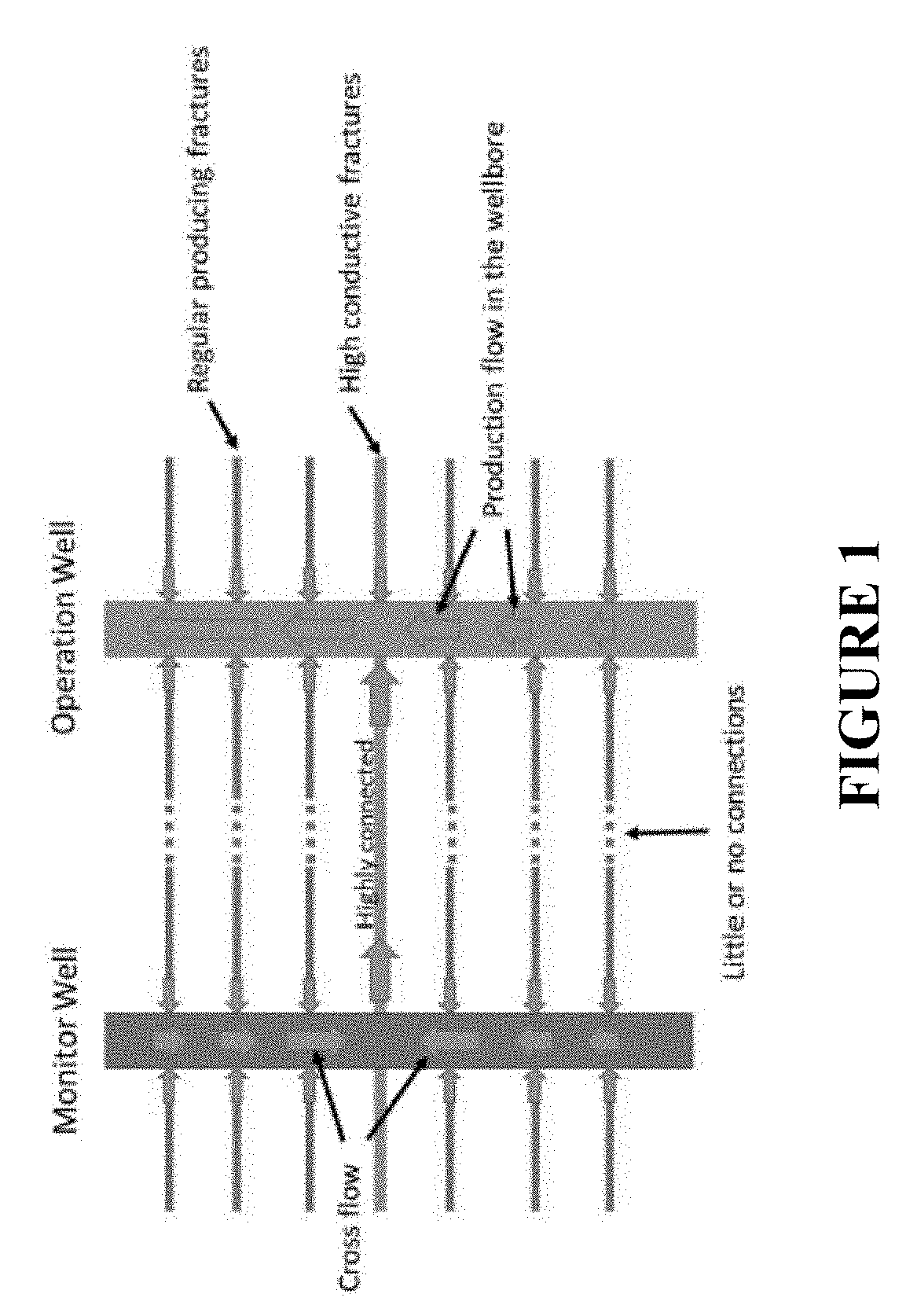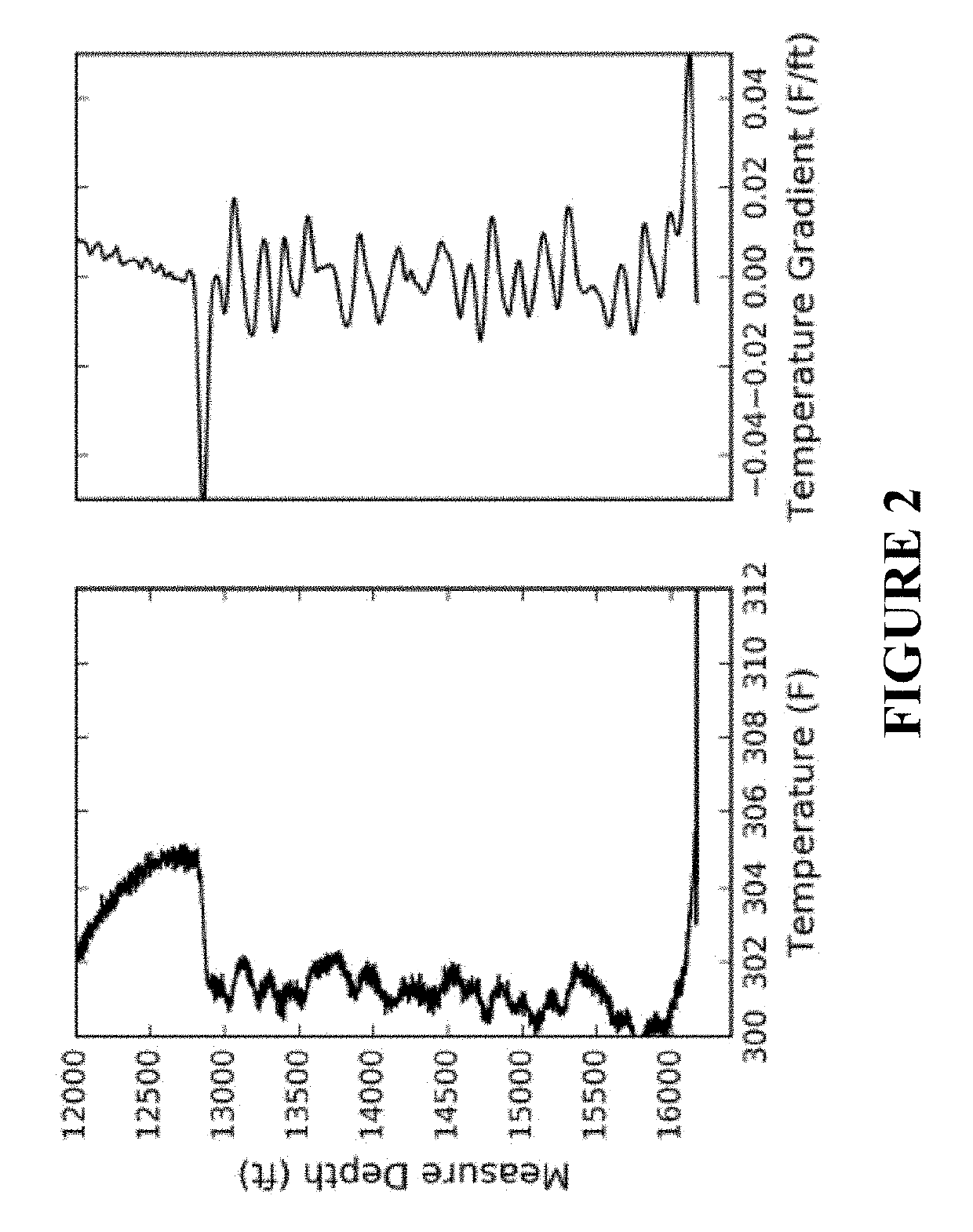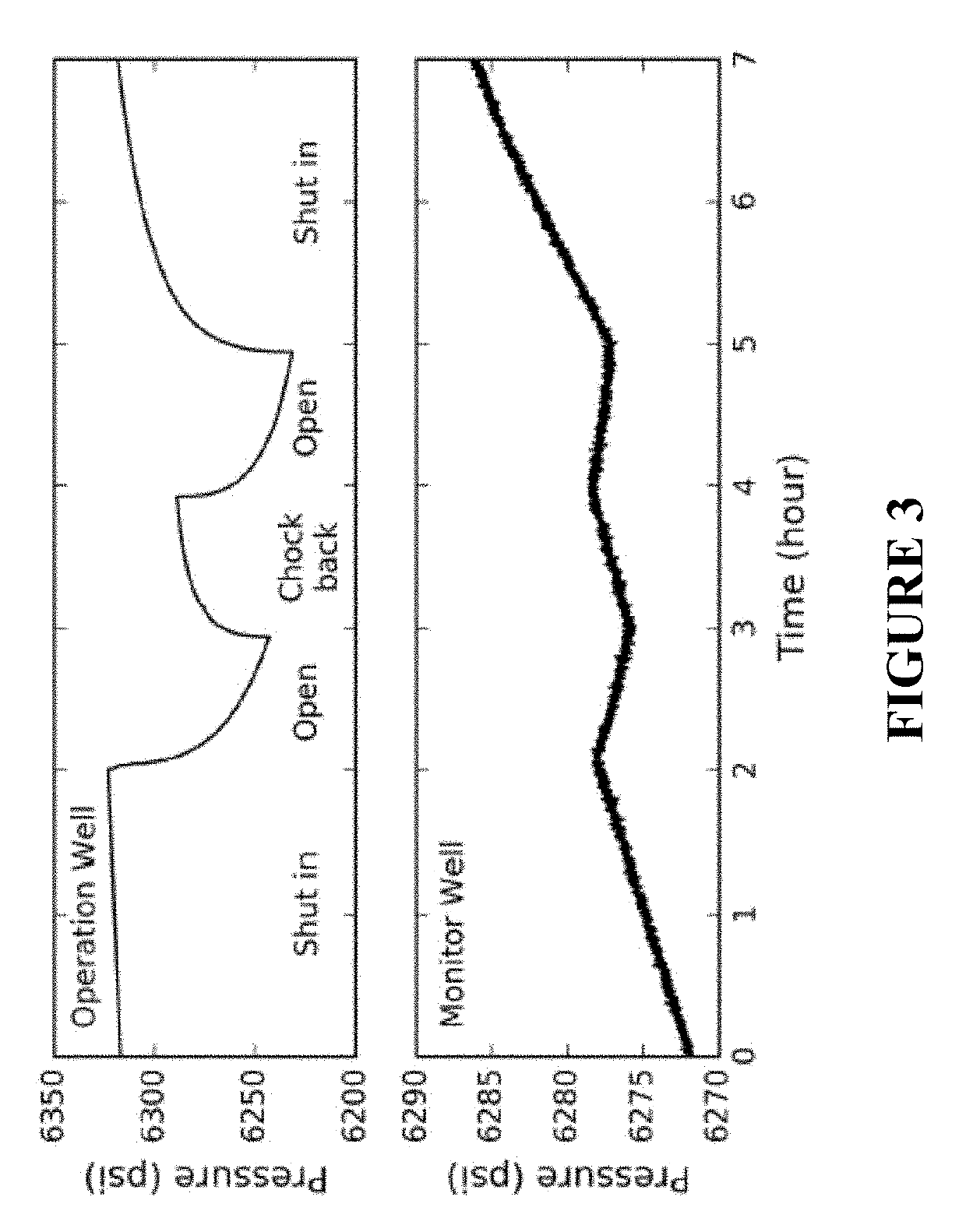Low frequency das well interference evaluation
a technology of interference evaluation and low frequency das, which is applied in the field of low frequency das well interference evaluation, can solve the problems of inability to measure absolute temperature and temperature change relative, and achieve the effect of increasing the calculated semblance accuracy
- Summary
- Abstract
- Description
- Claims
- Application Information
AI Technical Summary
Benefits of technology
Problems solved by technology
Method used
Image
Examples
Embodiment Construction
[0123]Herein, we use the data from two adjacent hydraulically fractured horizontal production wells. However, a similar procedure can be used for other kinds of wells.
[0124]Because DAS is a strain rate sensor and the fiber is mechanically coupled with the formation, strain from the minute temperature variations caused by interference can be detected. The DAS data are recorded at an offset monitor well during production of an adjacent well. The fiber-optic cables are preferably installed outside the casing and cemented in place. The raw data are sampled at 10 kHz continuously at more than 6000 locations along the wellbore, with 1 m spatial sampling and 5 m gauge length. The recorded optical phase is differentiated in time, hence the DAS data are linearly correlated with the strain rate along the fiber.
[0125]The raw DAS data are down-sampled to 1 s after a low-pass anti-aliasing filter (0-0.5 Hz) is applied. The data are then median filtered to remove any spiky noise. Another low-pass...
PUM
 Login to View More
Login to View More Abstract
Description
Claims
Application Information
 Login to View More
Login to View More - R&D
- Intellectual Property
- Life Sciences
- Materials
- Tech Scout
- Unparalleled Data Quality
- Higher Quality Content
- 60% Fewer Hallucinations
Browse by: Latest US Patents, China's latest patents, Technical Efficacy Thesaurus, Application Domain, Technology Topic, Popular Technical Reports.
© 2025 PatSnap. All rights reserved.Legal|Privacy policy|Modern Slavery Act Transparency Statement|Sitemap|About US| Contact US: help@patsnap.com



